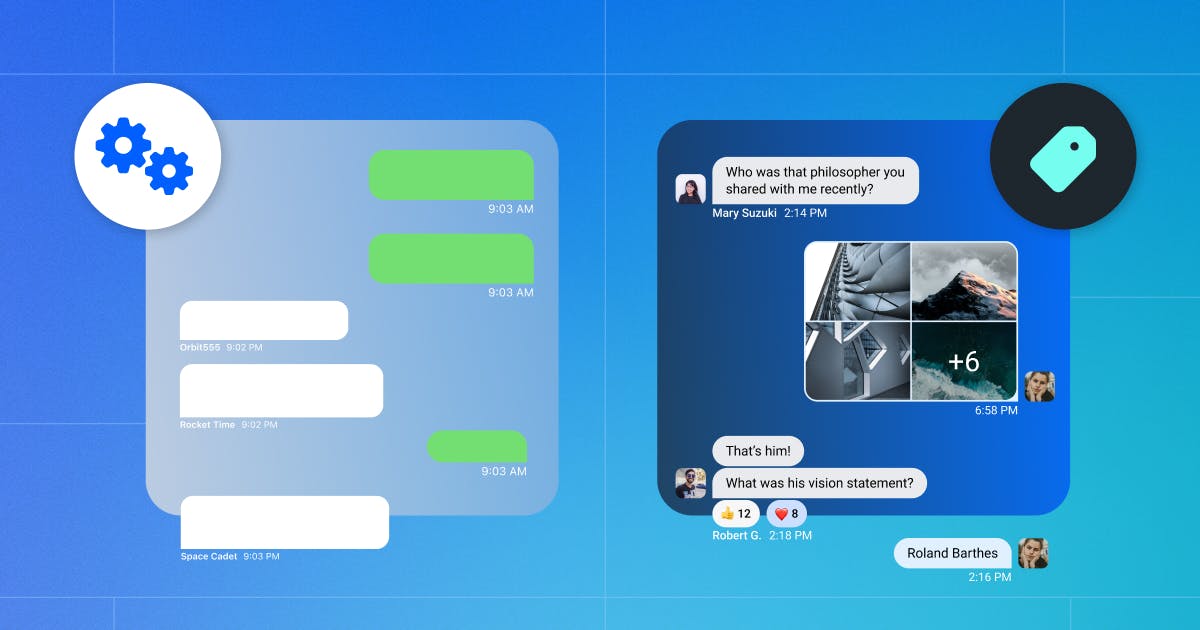But, there are three major unexpected costs of choosing to shoulder the entire engineering process in-house. If your team is weary of integrating out-of-the-box components, learn what it’s costing you below.
1. Competitive Advantage

An average of 1,042 new apps are added to the Apple app store and over 3,000 to the Google Play store daily. You lose a piece of your competitive advantage to market saturation every day your project is delayed.
Building in-app functionalities that could otherwise be integrated with reusable components has the potential to bottleneck progress and delay your time to market. In addition to initial prototyping, decision ownership, achieving regulatory compliance standards, cross-platform development, and user feedback rounds, incremental code iterations add up and can set your launch back indefinitely.
One API user says, “We were able to quickly plug in a solution for our SaaS, which otherwise would have cost us many months of development, thus allowing us more time and energy to focus on our core business.”
If your top competitors are leveraging APIs or SDKs to develop the same feature you’re building in-house, they could make impressive progress in the same time it would take your team to ship V1. Whether you have a hundred engineers on an in-house build or are making it work with a lean team, partnering with a software vendor will expedite your product roadmap while increasing the performance of your app to give your GTM effort the boost it needs to succeed.
2. User Experience

When building an in-app component from scratch, your development team must identify their needs, wants, and nice-to-haves to narrow the project's scope to a manageable level. If time and engineering resources are constrained, the “want” and “nice-to-have” features might never see the light of development. But, one user’s “nice-to-have” is another’s “must-have.” Foregoing advanced feature development due to the limited scope of an in-house build can negatively impact user experience and encourage them to seek out a better one among your app’s competition.
Stream customer Paired says, "We wanted real-time chat with your usual features like channels, participants, message editing, typing status, and online/offline indicators—things like that. When you start adding those up on your list of requirements, it becomes a really, really complex use case."
Ready-made APIs and SDKs are not only quicker to integrate than home-grown solutions but provide a feature-rich UX from the jump and are backed by specialized teams dedicated to the consistent iteration and release of improvements. Partnering with a third-party vendor to develop certain app components means your users get what they want and need, plus all of the extra features on their wish list.
3. Technical Debt

If you want to build in-house, you have to maintain in-house, too. If the final destination of your roadmap is an app store, you’re forgetting to factor in the vital work that goes into post-launch engineering.
Bug fixes, feature improvements, compliance maintenance, and UX adjustments—they will all fall on your team long after your app goes to market, and they will pull resources away from iterating the core competencies of your offering.
API and SDK vendors commit to the maintenance and improvement of your integrated component. The extensive documentation they provide is an invaluable self-served resource your team can lean on before, during, and after implementation. Vendors will also offer customer support through Slack, on the phone, via email, or over live video.
The Answer to Your Build vs. Buy Dilemma
There are a host of software components to stop building for your app for the sake of saving time, resources, and technical debt. But we understand that releasing and sharing control with a third party can be uncomfortable for some companies. To help you make the best decision for your business, learn how a CPO approached the build vs. buy decision.
Think you have your answer? Try Stream's APIs and SDKs free for 30 days, start your trial.

